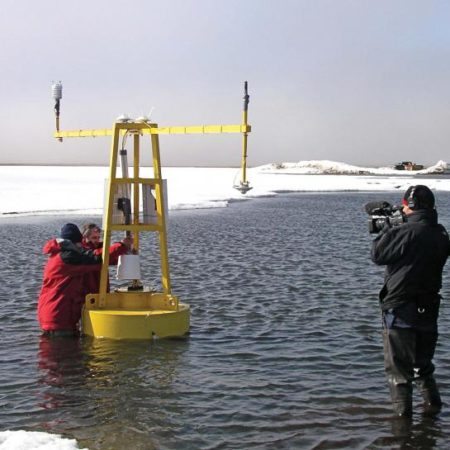Have you ever thought about the weather forecast and how it doesn’t always predict the weather the way it’s supposed to? Isn’t it frustrating to check the TV to find out it’s supposed to rain and then you end up carrying your umbrella for nothing?
Even though weather reports do require a lot of scientific approaches and are backed by knowledge, they are often associated with the location of the equipment used for monitoring. Quite often it’s located at airports and these locations can be just that far away that they’re exposed to different conditions. Hence, the mismatched data.
Well, what if we told you that you could predict the weather by using a simple weather station you could install yourself? You’re not alone, there are a large number of people who simply can’t rely on TV-based weather reports: golfers, gardeners, sailors, or simply weather buffs.
You could easily rely on personal weather stations which have lately become so technologically sophisticated that they can really offer you just the right hyperlocal information you need.
How Much Does It Cost?
Accuracy doesn’t come cheap. Depending on the features and the quality of the equipment, a personal weather station may cost you anywhere between $150 and $2,500. Of course, if you’re not well versed, maybe it isn’t the smartest idea to spend a fortune on equipment you don’t even know how to install, let alone use and get data readouts.
Maintenance is the Key
Just like any other piece of sophisticated instrumentation personal weather stations do require some maintenance from time to time. Some parts are more fragile; some parts require no maintenance at all, but still, you should be well prepared if you want to enter the magical world of personal weather forecasting.
Proper maintenance will assure that the durability of your equipment isn’t compromised, and the same goes for the accuracy of the data you acquire with it. There are different calibration tests and routine checkups you need to perform on a regular basis so that your equipment gives you accurate results.
Let’s get you started with some guidelines which will help you keep your personal weather station in good shape. We’ll begin with the console.
The Console
As it’s a very sensitive part of the system, the console should always be kept away from sources of extreme cold or heat. Don’t ever expose it to direct sunlight. Another important aspect is to always change its batteries when you notice that the brightness of the display has become too weak. It’s a fragile instrument so make sure you don’t damage it physically.
The Sensor Unit
As you’ve probably realized so far, sensors are the key to any personal weather station. They are in charge of transmitting the data containing different variables and sending it to the console unit.
One of the integral parts of the whole sensor system is the pole (also sometimes referred to as the tripod), and that’s basically where the sensors are installed. It’s of utmost importance to check it for physical or structural damage every six months.
If you notice any damage during checkups, you should replace it right away. If your station is positioned in an area covered in grass, make sure you mow it down once every month, so the wiring can remain exposed. During that, be extra careful not to damage the wiring.
While we’re it at, all the wiring cable connections require routine checkups 3 to 4 times per year. Prolonged exposure to extreme weather conditions might cause external damage. Needless to say, any damaged cables need to be replaced immediately.
Don’t forget that the humidity and temperature sensors need to be checked for damage twice a year, and they also need to be cleaned simply by using distilled water. These will have to be sent to their respective manufacturers for recalibration once a year.
Last but not least, you also need to check your UV radiation sensor once a month. Sometimes you’ll have to make further screw adjustments and you always need to be sure that there are no debris or dust on the sensor head.
The drain hole always needs to be perfectly clean and it also needs proper recalibration by the manufacturer once every two years.
The Desiccant
This substance is another highly important part of your personal weather station system. If the humidity inside the data logger enclosure passes over 35%, you need to change the desiccant packs. Also, while we’re at it, you must check the humidity indicator card once every month, and it will require a full replacement every two to three years.
The Rain Gauge
This component has a funnel that often gets clogged by various sorts of debris like dust, insects, or leaves, so it needs a regular checkup at least once a month. Take it to an experienced technician for a proper recalibration once every year.
Power Supply Components
Without a proper power supply, your private weather station simply won’t work. You need to maintain proper power because without that you won’t be able to acquire accurate data from the station.
Some weather stations are solar powered, and if that’s the case, make sure you check the panels three to four times per year. Solar panels also require proper tilt and direction at all times, so you need to constantly keep checking these. Sometimes the glass can get dirty so clean it often simply by using a very soft cloth. Abrasive cleaners need to be avoided as they may cause permanent damage.
Battery powered units require frequent cleaning of the batteries. Any issue with the battery should lead to an instant replacement.
Conclusion
Even though all weather stations have limited durability, you can extend it by using properly scheduled maintenance and checkups of all their vital parts.
Hopefully, our guidelines will help you get a better grasp on what needs to be done to keep your personal weather station up and running for a long time.

